
Wet Paint In The Wild: Writer Janelle Zara Takes Us To The Greek Island Hydra For The Deste Foundation's Jeff Koons Show
Welcome to Wet Paint in the Wild, an extension of Annie Armstrong's gossip column wherein she gives art-world insiders a disposable camera so they can give us a peek into their corner of the madcap industry.
I've long heard lore of collector Dakis Joannou 's annual projects at the Deste Foundation in Hydra , Greece. Jeff Koons was tapped in to take on the challenge a few years ago, which was pushed from 2021 to 2022 because of the pandemic. All of the anticipation led me to believe that I ought to get a to have boots on the ground for the uber-moneyed, sun-drenched affair. Janelle Zara was the obvious choice, and lucky for me, she was able to bring a disposable camera or two with her to the island for Koons' show,“Apollo”. Without further ado…
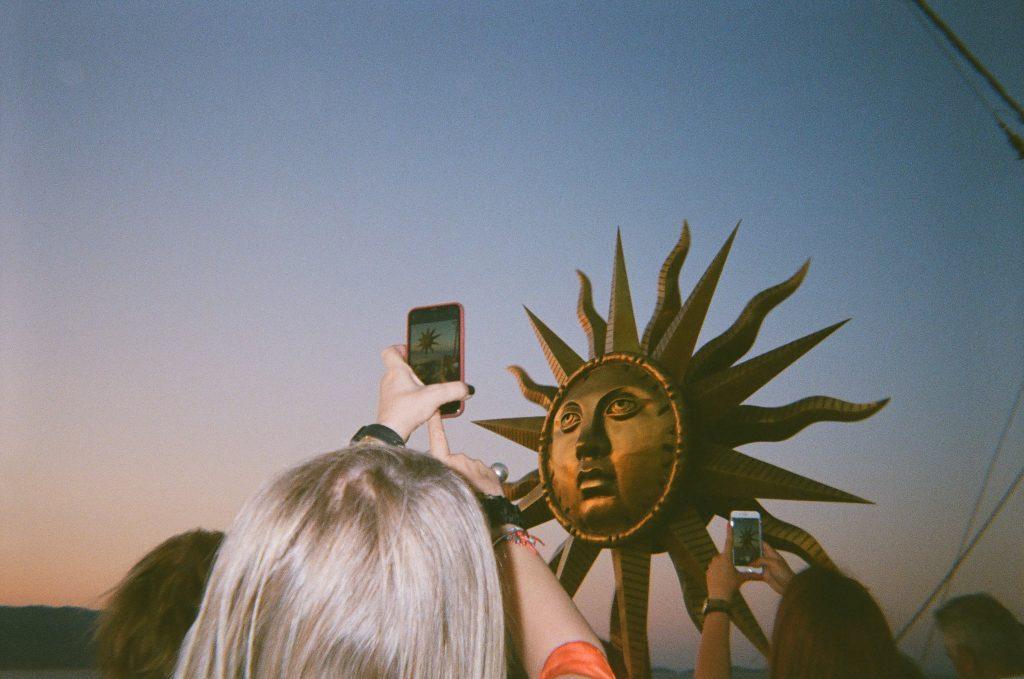
On the day before the summer solstice, the ancient people of Hydra, a Greek island in the Saronic Gulf, would gather to worship the divine sun. The sun cult's followers saw their golden idol, a two-sided face surrounded by mechanically turning rays, as their patron god of wealth and prosperity. They shared his image widely and ritualistically, in the hopes of raising their own personal esteem.
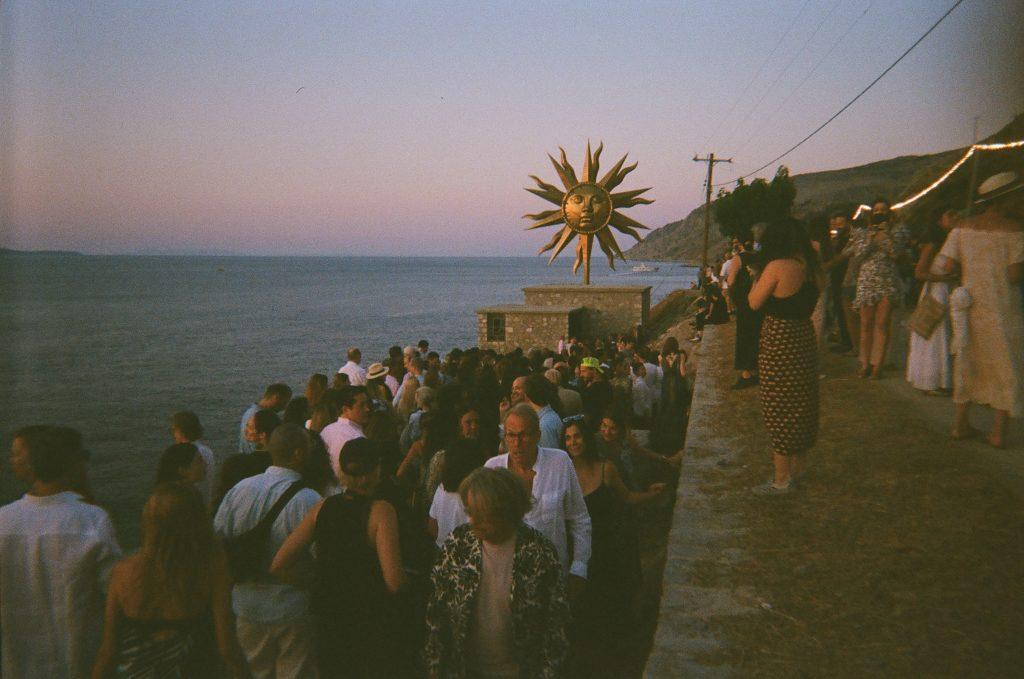
I'm kidding. This is actually the vernissage for“Apollo,” a Jeff Koons solo show that's been shrouded in secrecy since he announced it in 2019. And at the end of this chaotic dirt path is the Athens-based Deste Foundation's project space, a tiny former slaughterhouse, where it has been hosting annual summer exhibitions since 2009. I came to cover the opening for magazine, where you can read a more detailed recap of the exhibition. Meanwhile in this photo, you might see VIPs cautiously sliding down the cliffside to the front of the line, and the sun cult's followers cleaning up on the Instagram likes.
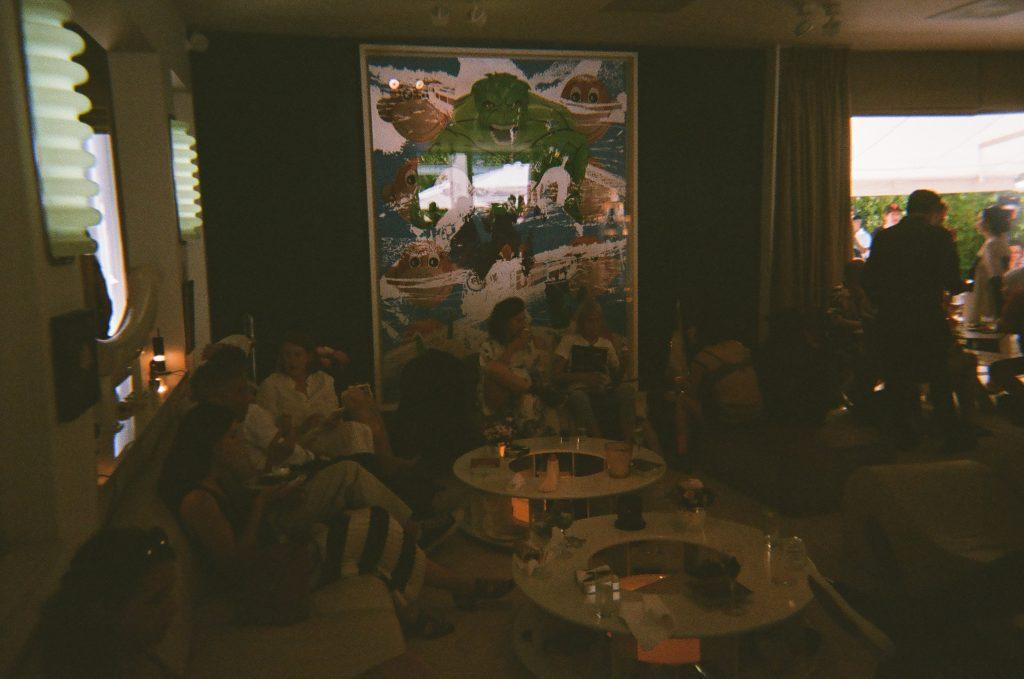
Like any decent Greek celebration, the annual opening is a multi-day affair. It starts with Sunday brunch at Deste founder and super-collector Dakis Joannou's house in Athens, open to all kinds of collectors, artists, writers and their +1s (and 2s and 3s). This picture is very early in the day; eventually we pack every seat in the house, eating the unlimited supply of fish, lamb, desserts, and souvlaki, while a DJ plays wedding-appropriate music. In this photo, if you try, you can make out Maurizio Cattelan eating an ice cream cone next to Massimiliano Gioni.

Before diving into the epic buffet, everyone enters the house through its gallery wing. The hang is heavy on Cattelan, Koons, and Urs Fischer, which gets a D- for diversity—but honestly, it's excellent. It makes me realize that I rarely see personal collections with *personalities*. Dakis and his wife Lietta collect artists that lean into a dry humor, and pieces that spark subversive joys. The living room has a Fischer sculpture of the couple holding even smaller sculptures of the couple, and a can of Piero Manzoni's under the coffee table. Cattelan's sculptures of himself pop up out of the floor, mounted on walls, lying in bed. The man in the hat in this photo is KAWS.
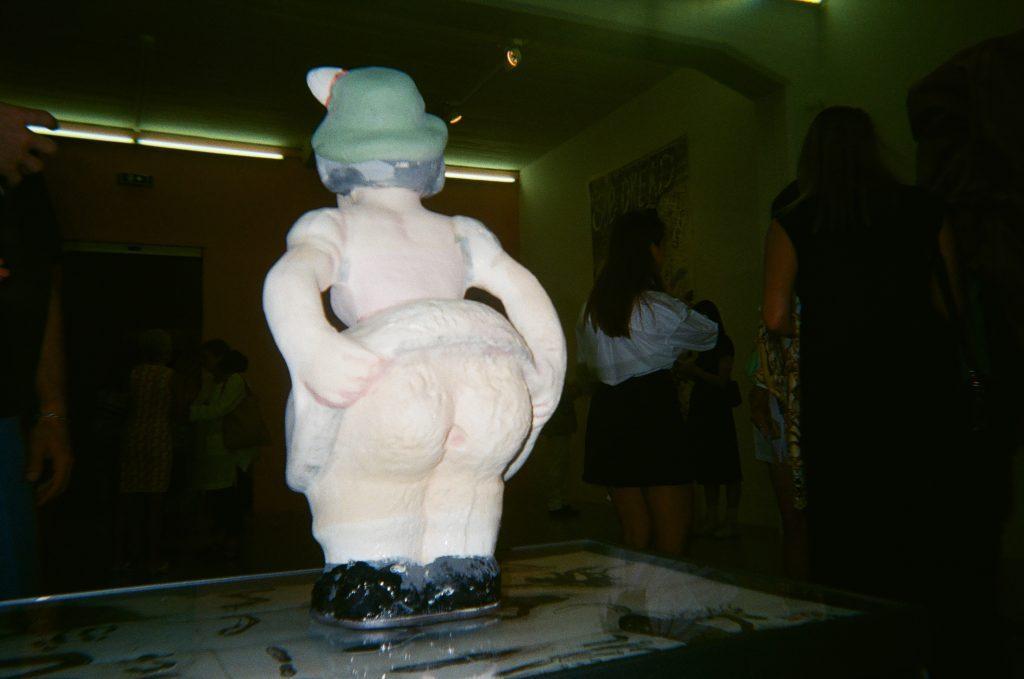
There's also a whole survey on Kaari Upson, the late and beloved L.A. artist's artist, up at the Deste Foundation's Athens space. I never had the pleasure of knowing her, but what I get from her work is a dark sense of humor paired with obsessive emotional inquiry. This 2020 piece is called , and I think a firework is supposed to go in there?
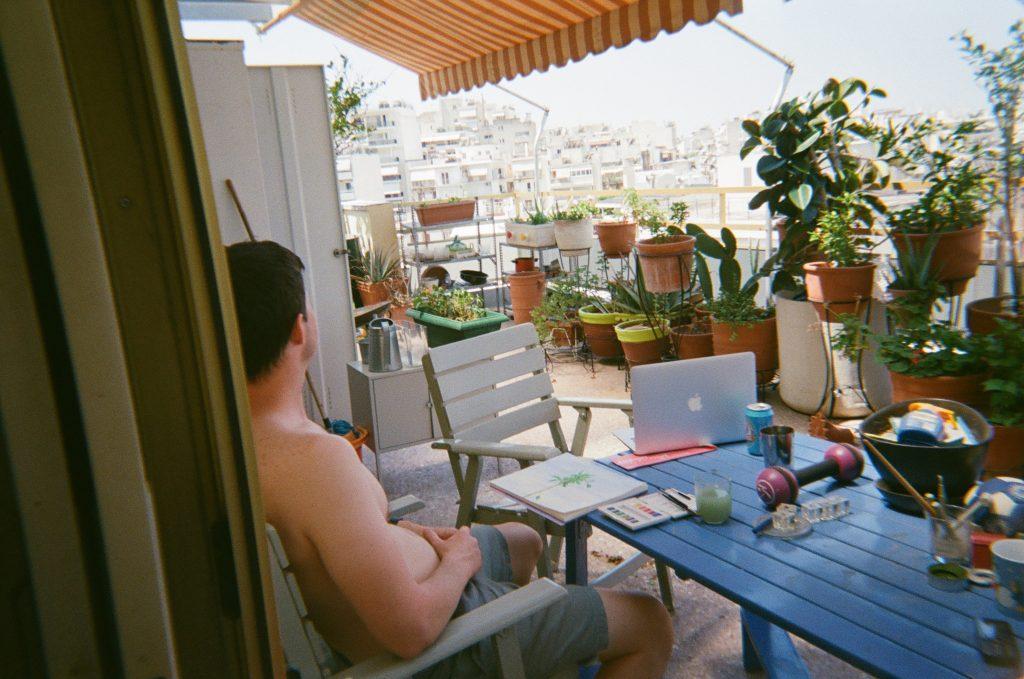
I'm traveling with my partner, painter Joe Reihsen, and we've just spent the previous four days watching sunsets on this Athens terrace. (Special thanks to artist Despina Stokou for lending us her apartment.)
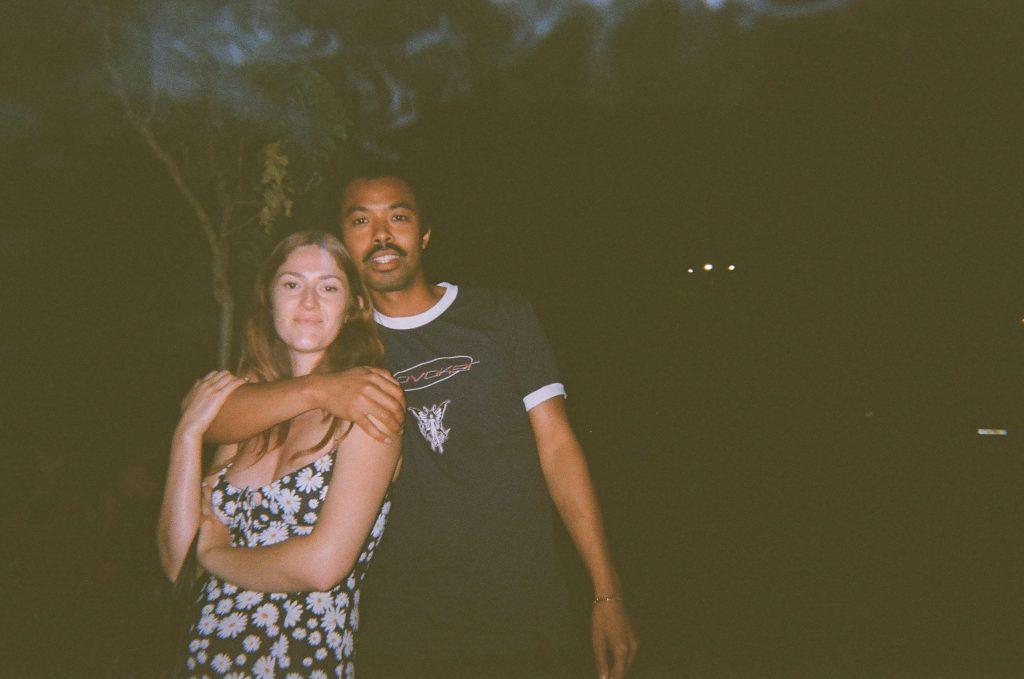
We link up with a whole traveling crew here from my partner's gallery, The Hole, which includes painter Alex Gardner and his partner Colleen. In Athens, we become acclimated to a different passage of time, where dinners start at 10 p.m. and seamlessly last until 1 a.m. We entertain our own theories on Greek longevity: not rushing through life makes it last longer.

That's my very good friend Ann Binlot, who's also here to write about the exhibition, and today is her birthday. And that's Hole director Ray Bulman, who I think might be 6'11”? He's so tall that when we walk to a bar, he gets there a full day before anyone else, but generously uses that time to preorder us a row of martinis. He'll later tow Ann around the Mediterranean on a floatie, so I call him the mama bird of the group. This is a bar that one artist describes out loud as“the Lucien of Athens.”
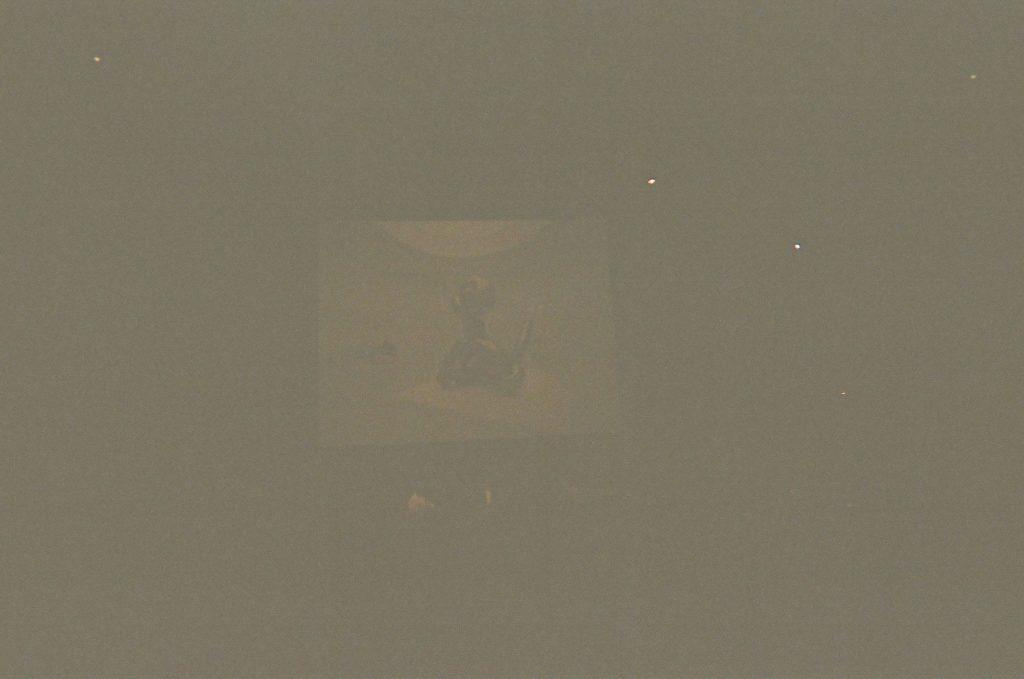
But back to Koons. I am extremely bummed at the poor quality of this photo, so please bear with me. Imagine we're in a shiny new auditorium facing a sculpture shown in an enormous projection. Koons, Massimiliano Gioni, and journalist Farah Nayeri are engaged in a panel discussion on an interesting topic: How exactly did Koons become so famous that, unlike every other living artist, even non-art world people know his name? They talk about the universal appeal of lawn ornaments and balloon animals,“generosity,”“acceptance,” and Koons's many invitations to outer space. When Nayeri broaches the possibility that his fame is due in part to headline-generating auction results, he replies, that's only due to“the limited quality of the press. It's easier for them to talk about money […] because the writers are too insecure to speak about art.” I feel personally attacked.
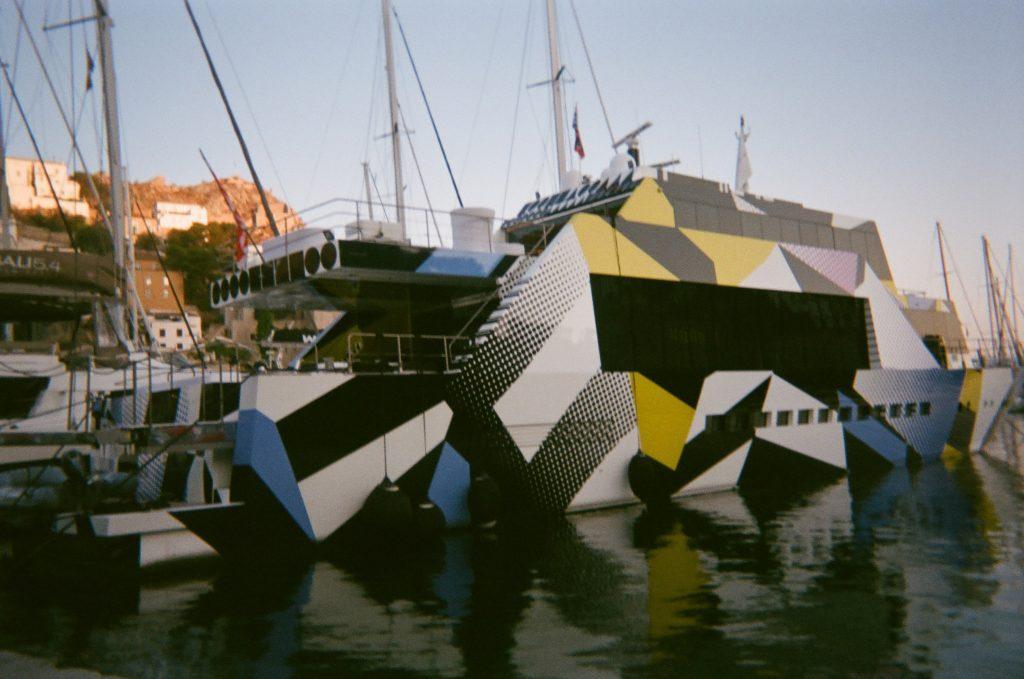
The day after Sunday brunch, we sail to Hydra. Dakis and his friends travel from Athens on“Guilty,” a yacht famously painted with a Koons design, while the rest of us take the ferry. The reactions to the talk are mixed; whether you think the moderator went too hard or too soft depends on your existing feelings about Jeff Koons. I've always been fascinated by the concept—an artist with immaculate production quality and singular luxury status, and the dazzling luster of both his sculptures and sales pitch that must have some hypnotic pull. A man sitting behind me tells another that he's not a true fan of Koons' work, but has a“deep respect for the man.” He said something like,“Everyone listens to him religiously, as if he were the new Leonardo.” The conversation shifts to a new fund for auction guarantees, and he marvels at the uniqueness of American bankruptcy laws:“The American system gives you the means to fail until you succeed.”
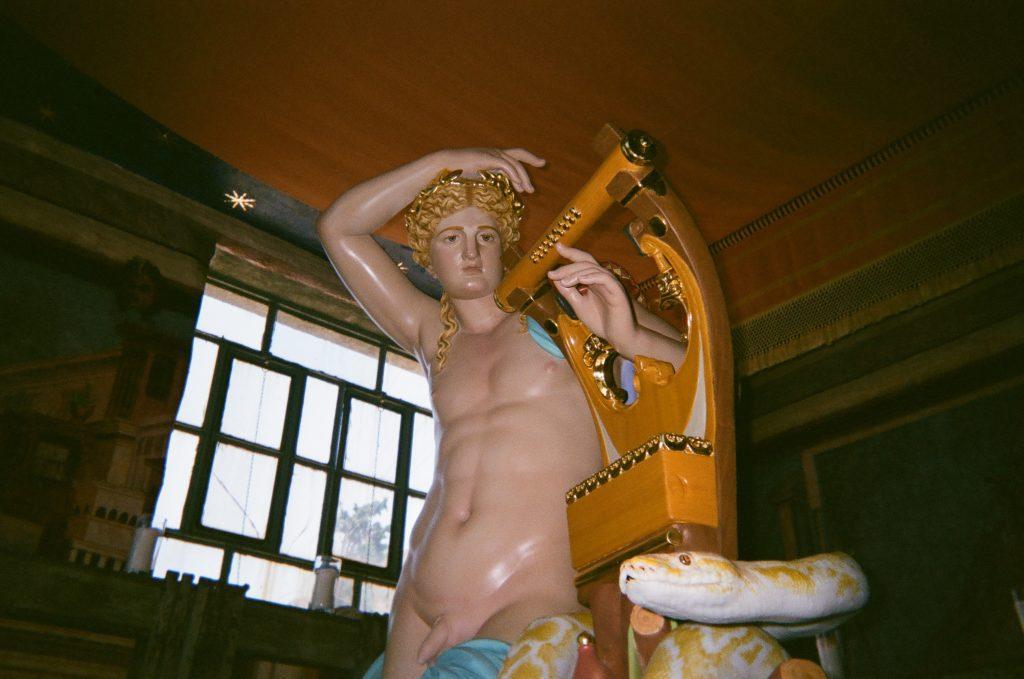
So, let's cut to the big reveal: the surprise inside the slaughterhouse is a polychromatic sculpture of Apollo with a plastic sheen, plus a mashup of cultural and allegorical references that remind me of Damien Hirst's big-reveal shipwreck show in Venice. I have a longer description at , but basically the old stone slaughterhouse is now a temple with an animatronic snake that's so real it scares people. The score is lyre music paired with isolated pop vocals, including Britney Spears' voice echoing like a cultish chant:“I'm Mrs. Lifestyles of the rich and famous/ I'm Mrs. Oh my God that Britney's shameless!” (Kind of similar to R. Luke DuBois's 2010 .)

There is no press release or origin story, so these Nikes are what you make of them.
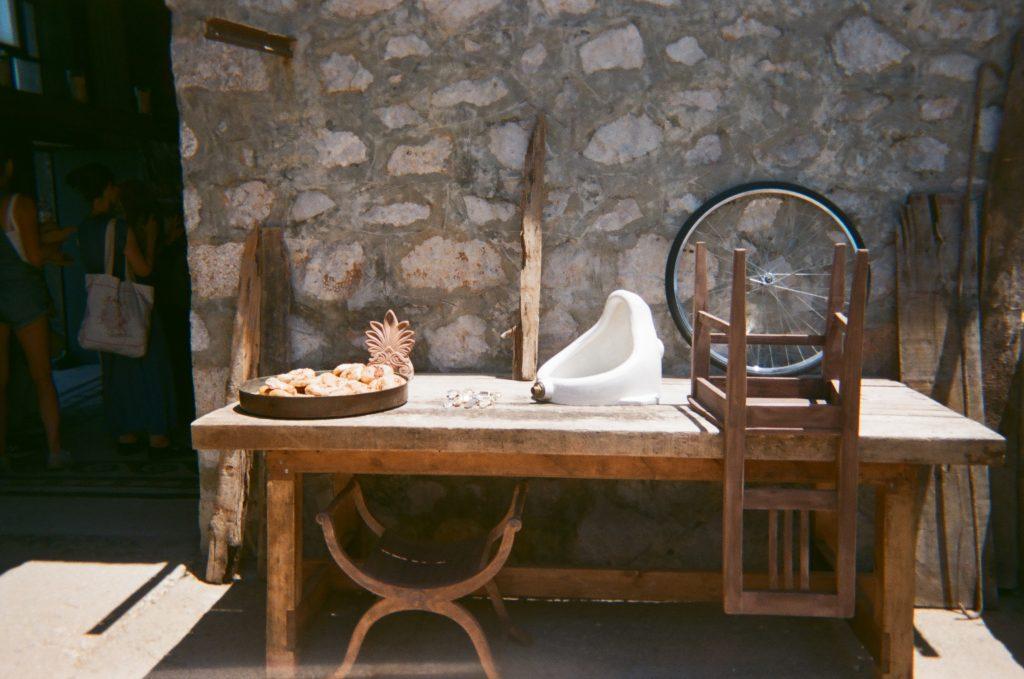
Outside there's goats, burning incense, and an altar to Duchamp. The cult vibe surrounding this work is very real. I'm super-bummed that I don't have pictures of my friends, Ann and Alex Valls, who show up to the reception wearing identical outfits—two Koons-like sun necklaces from the souvenir shops and two tunic-style dresses. They look like goddess twins from ancient Greece, and start saying they're part of the Cult of Koons.
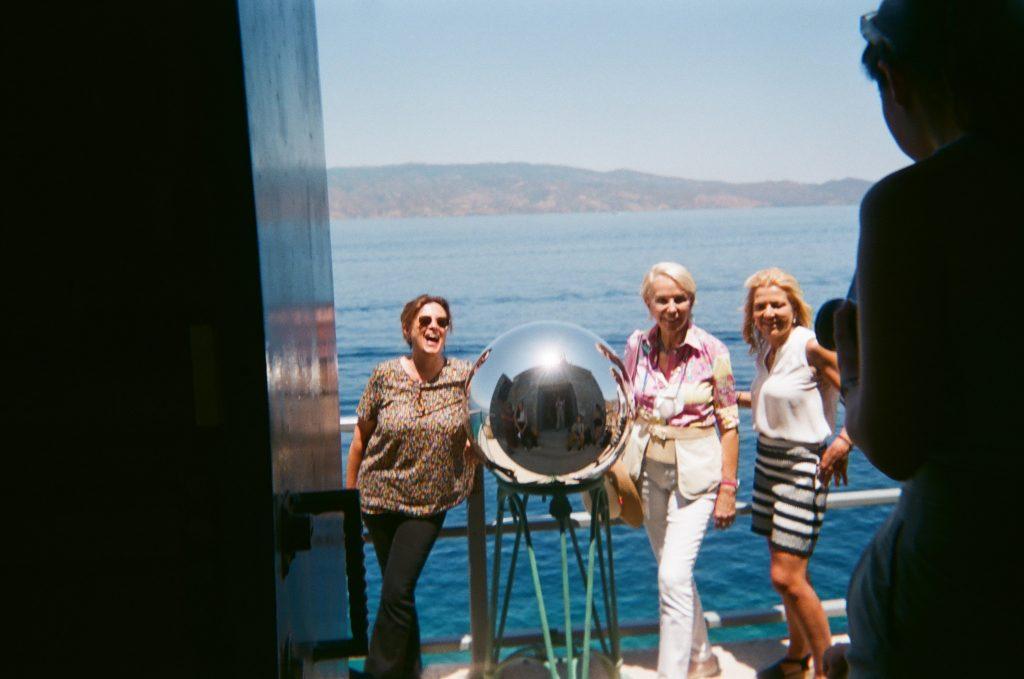
And, oh, you bet there was a gazing ball.
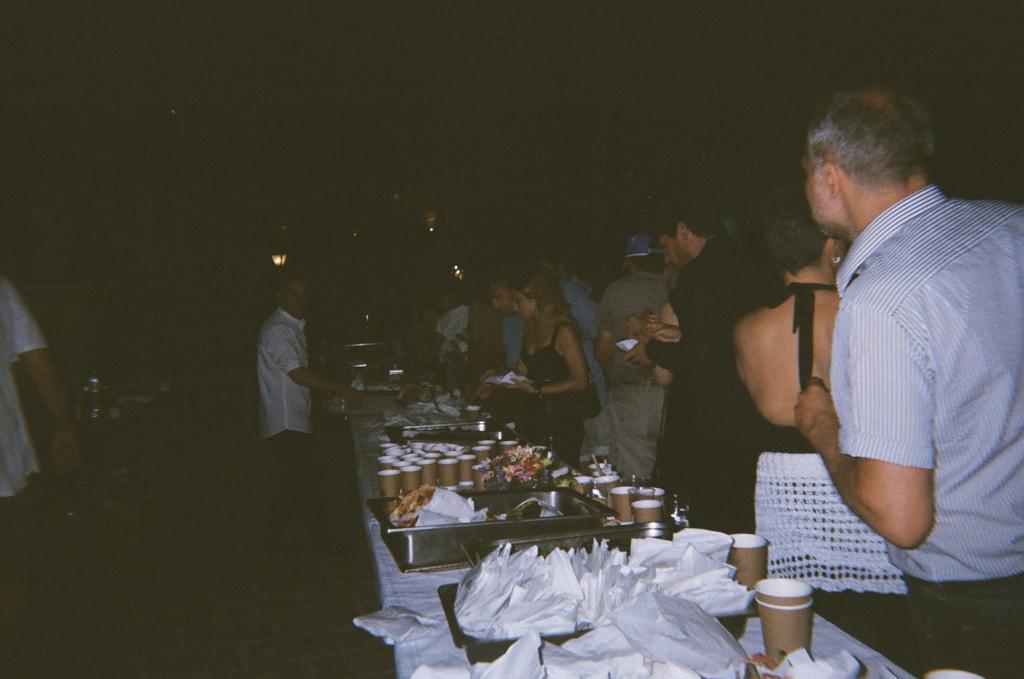
The reception opening night is glorious madness. Everyone is invited, including Hydra's non art-world tourists, locals, families and their children. We're eating and drinking from the infinite souvlaki and wine buffet, and a DJ blasts another wedding-appropriate playlist. Photographers and admirers in the crowd are swarming Dakis and Koons like paparazzi. The art world gathers in the outdoor bars in Hydra's port, and the vibe is extremely friendly, except when I'm reporting. I tell Cattelan I'm writing about Kaari Upson—he and Gioni had introduced Dakis to her work in 2015—and his face lights up. I ask if he'd like to comment, and he turns and runs in the opposite direction. I ask KAWS if I can take his picture for artnet, and he declines, and recognizes my small talk is mining for sound bites. Til around 4 a.m. or so, a tiny bar is hosting my second-favorite kind of dance party, European-style dissociation to house music in the dark.
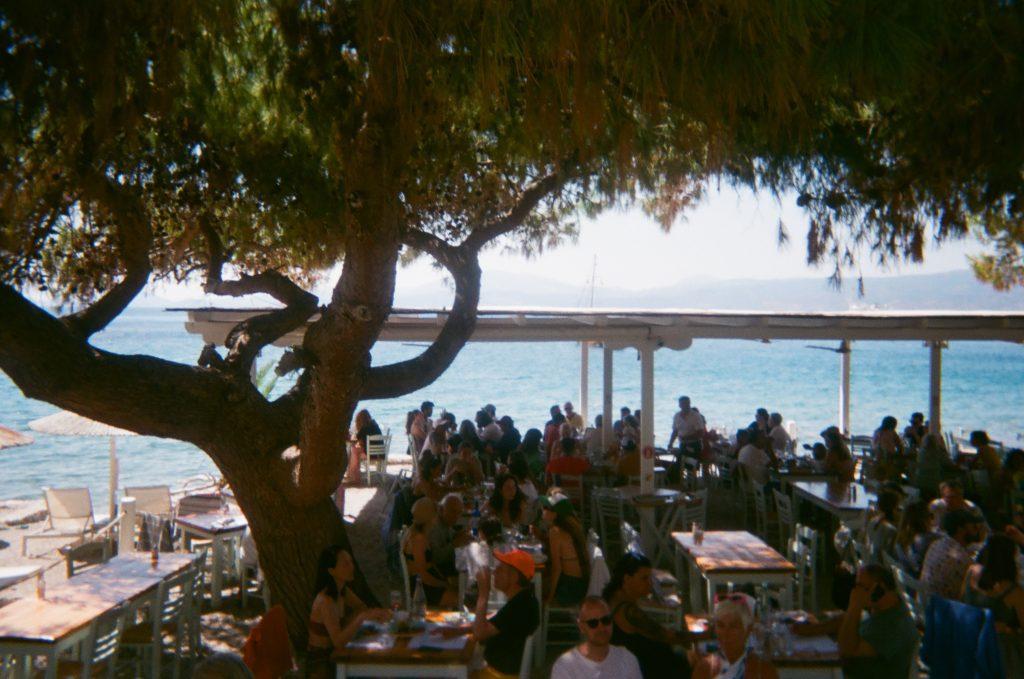
The next day, the art world reconvenes for long, late lunches on the beach of the Four Seasons on Hydra. The man in the hat is Jeffrey Deitch; his beachwear of choice is Nike athleisure wear. I have not yet decided what I want to write.
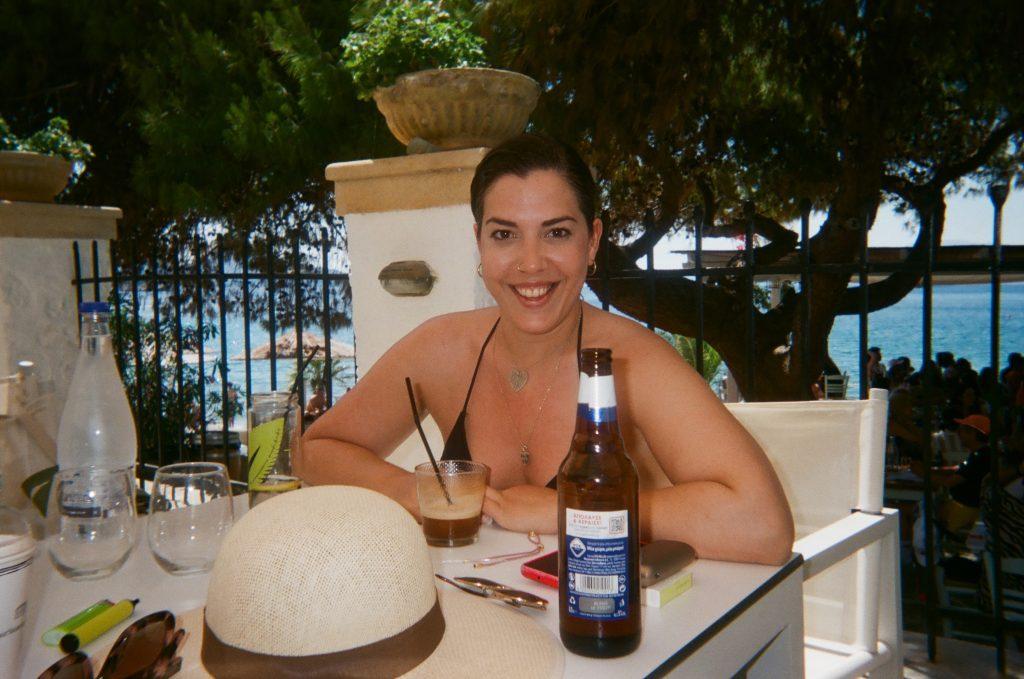
I'm at a table reflecting on the previous evening with Konstantinos Tsetos of Athens gallery Dia Horia, London-based artist Maja Djordjevic, and sommelier Giovanna Lykou, pictured here. On reactions to Koons' snake, Tsetos says,“What is fake and what is real is very difficult to distinguish.” (I ask this about the general art world all the time.) At the moment, the price of both gasoline and tomatoes are spiraling in Greece, Lykou says, but she thinks it's nice to see a growing number of non-art world Greek people come out to the events. When she was an intern at Deste in 2009, it attracted a more concentrated, rarified audience. She's since switched from art to the more lucrative career of beverage consulting.
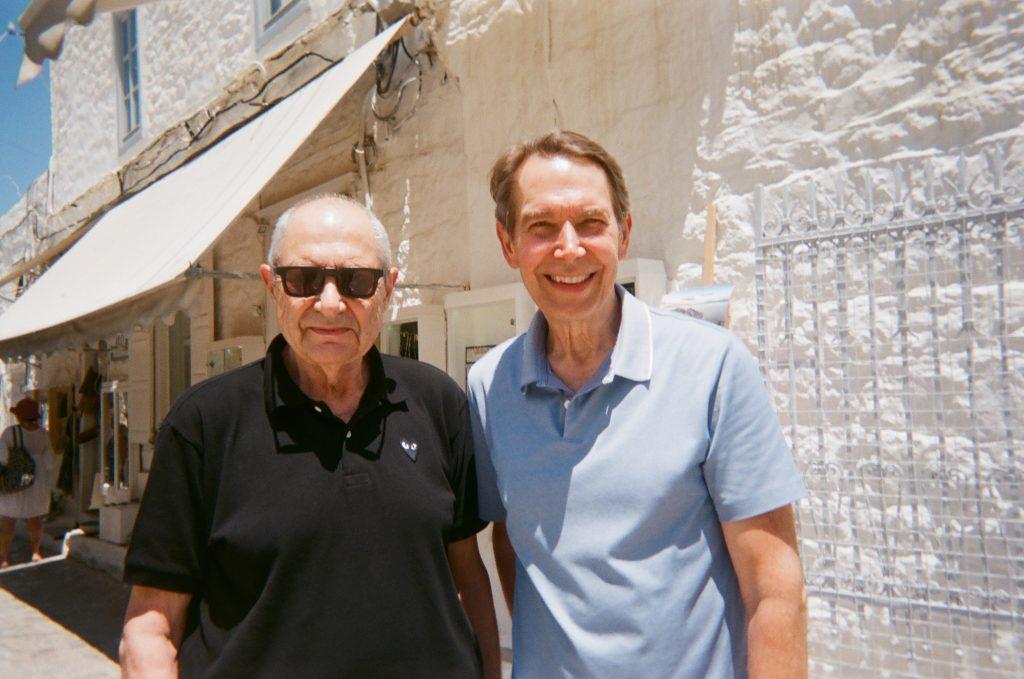
I pass Dakis and Koons taking a friendly stroll. I get the sense that they're only willing to entertain one question, and I just used it asking for this photo. :/
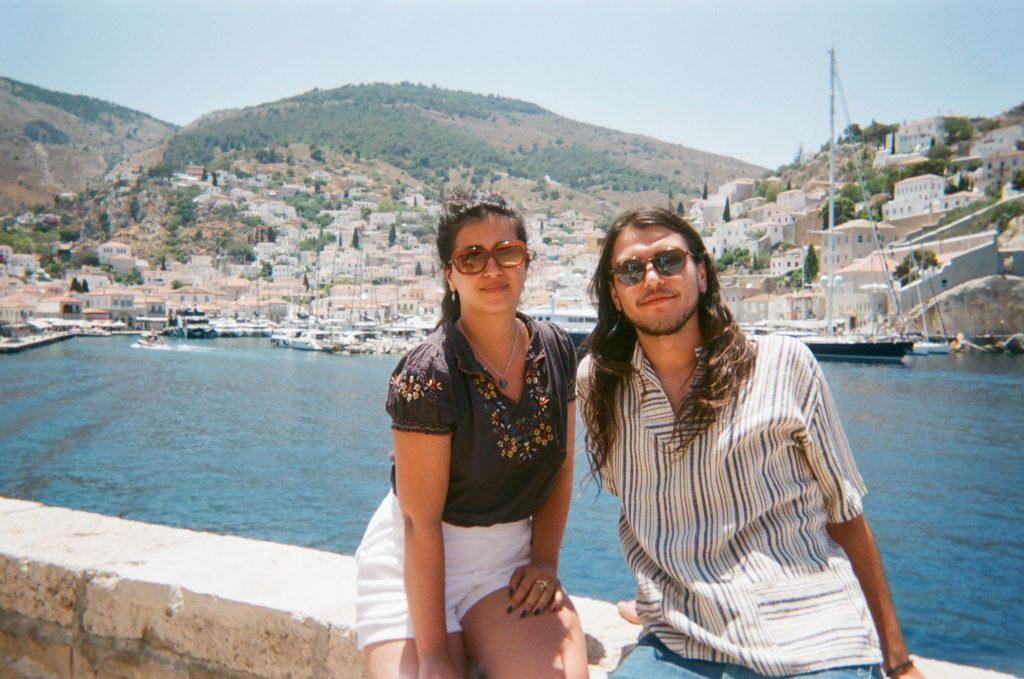
Cutie artists Calliope Pavlides and Connor Kay.
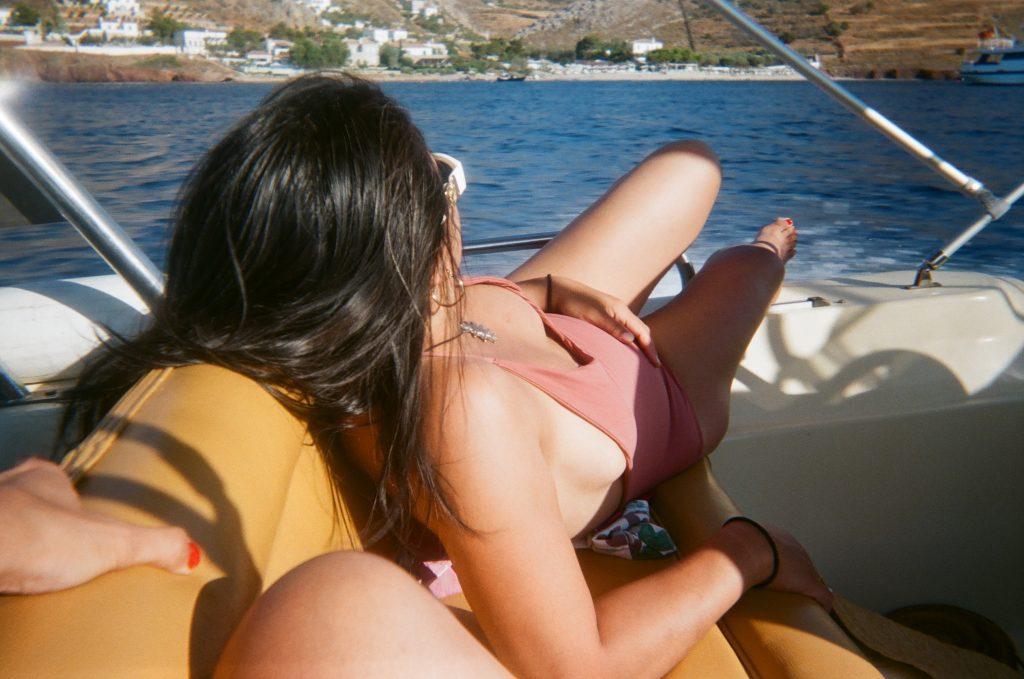
Our friend Jess Hodin (not pictured), who works at Frieze, rents a boat for the day. But because it's important to mix business with pleasure, I bring my computer on board.
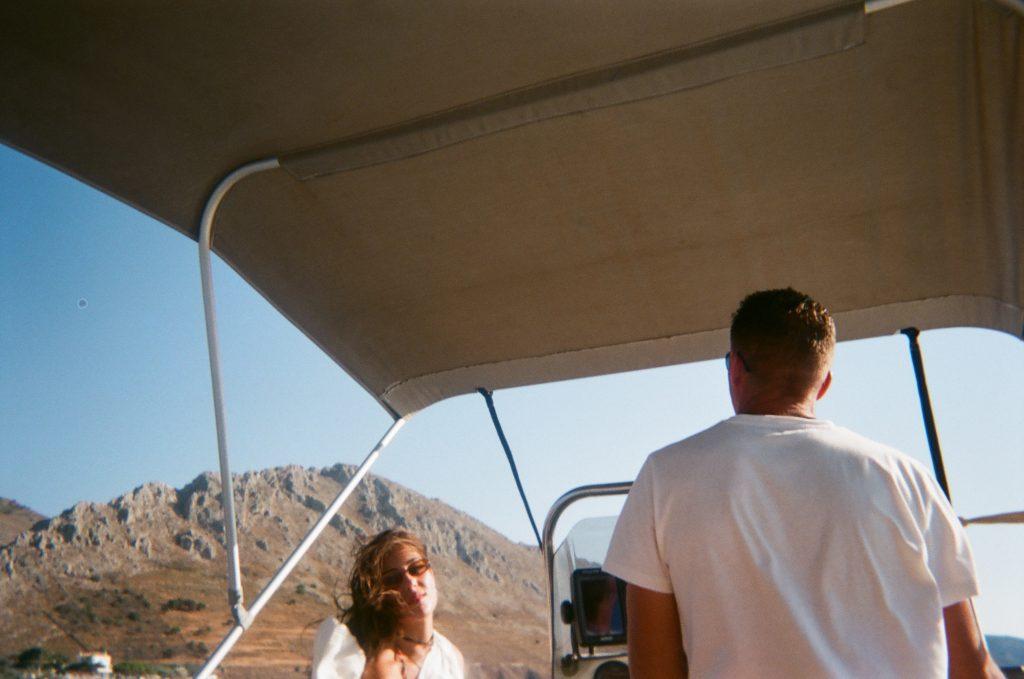
This is Alex power-boating into the sunset on the longest day of the year. The new Drake album sounds uncannily perfect for this. The jellyfish are out in full force, another consequence of climate change. The previous night, a friend of ours learned some good news the hard way: You can alleviate a jellyfish sting with baking soda, rather than urine. I miss our goodbye dinner that night finishing my article.
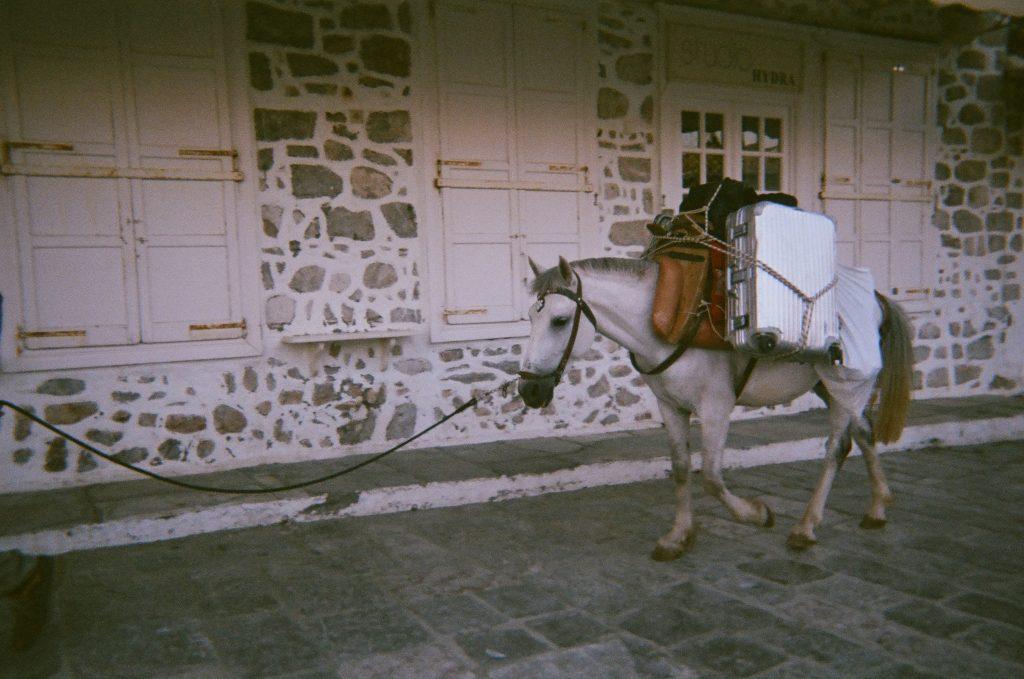
And like all good things, our story comes to an end. At 7 a.m. on Tuesday morning, the donkeys carry the Rimowa suitcases to the port of a carless island, and the ferry arrives to take the followers of the sun cult away. They look back at the island to wave goodbye to the divine sun perched above the slaughterhouse, and look forward to their return.

Legal Disclaimer:
MENAFN provides the
information “as is” without warranty of any kind. We do not accept
any responsibility or liability for the accuracy, content, images,
videos, licenses, completeness, legality, or reliability of the information
contained in this article. If you have any complaints or copyright
issues related to this article, kindly contact the provider above.

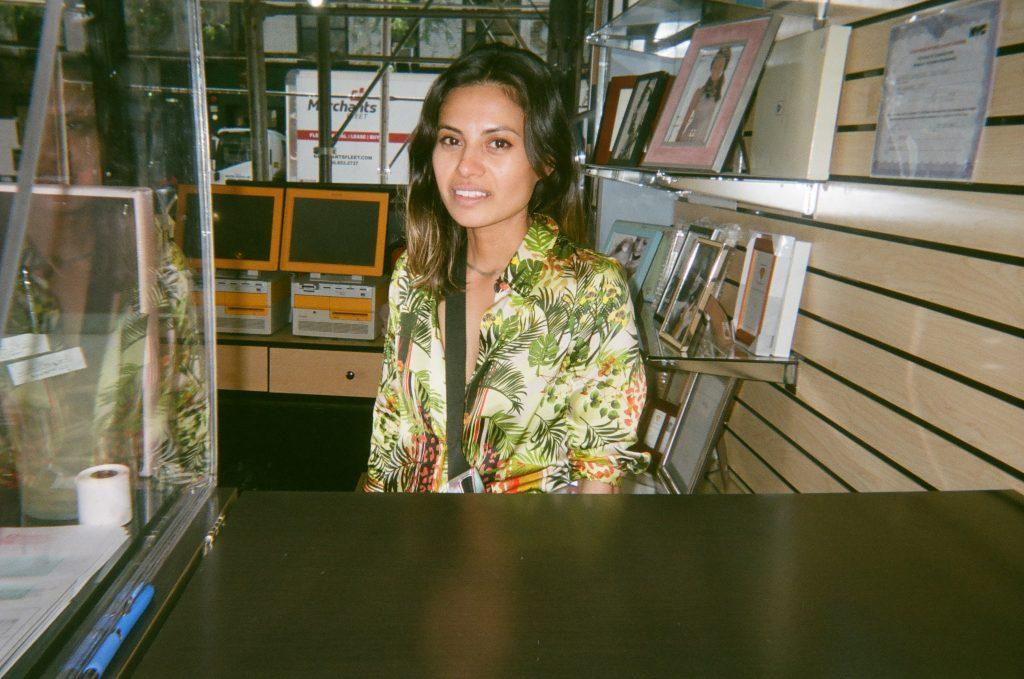
















Comments
No comment